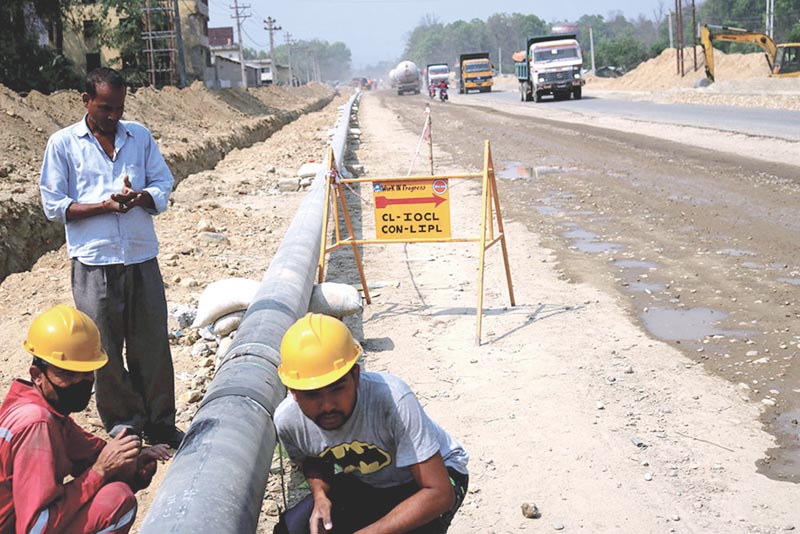Pipe-laying process of pipeline project begins
Kathmandu, April 19
The process of laying the pipes of the much-hyped Motihari-Amlekhgunj Pipeline Project has finally begun.
Following the launch of the ground-breaking ceremony of the cross-border pipeline project on April 7 jointly by Prime Minister KP Sharma Oli and his Indian counterpart Narendra Modi, the pipe-laying process along the finalised route of the project has begun recently, as per Sushil Bhattarai, acting deputy managing director of Nepal Oil Corporation (NOC).
Bhattarai informed that the related contractors for the project are currently laying pipes along the Parwanipur-Pathlaiya section, which stretches almost 10 kilometres.
“Majority of sections along the finalised project route are ready to start laying pipes and the required pipes and other machinery equipment for the project have already been imported,” said Bhattarai.
Bhattarai informed that encroachment clearance along almost eight kilometres along the finalised route, which falls under the periphery of Parsa Wildlife Reserve, has been affected following delays in approval of the environmental impact assessment (EIA).
“The government is likely to finalise and endorse the EIA of the particular section of the project route. Once the assessment is cleared, the pipe-laying process along the entire 37.2-kilometre route of the project will pick up speed,” said Bhattarai.
The project stretches from Raxaul, the Indian border to Amlekhgunj via Birgunj Customs, Birgunj Bypass, Gandak, Parwanipur, Jitpur, Simara and Pathlaiya. Of the total project length, almost 35 kilometres fall on Nepali territory.
The cross-border pipeline project, which was signed in August of 2015, was initially called Raxaul-Amlekhgunj Pipeline Project. Later, the project name was revisited after the Indian government decided to shift its fuel refinery based in Raxaul to Motihari.
Meanwhile, the Indian government has already started laying pipes on its side under this project.
The cross-border pipeline project was first proposed in 1996. But, the project finally edged closer to reality during Indian Prime Minister Narendra Modi’s visit to Kathmandu in 2014.
The INR 2.75-billion petroleum pipeline project is expected to be crucial to ensure regular supply of petroleum products in Nepal and
reduce fuel transportation costs. As per the agreement, Indian government will inject INR two billion for the project while Nepal has to invest INR 750 million.
However, the cost of building the Motihari-Amlekhgunj oil pipeline is expected to have gone up by at least 15 per cent compared to the initial projection following delay in construction of the project.






